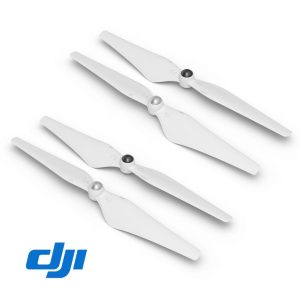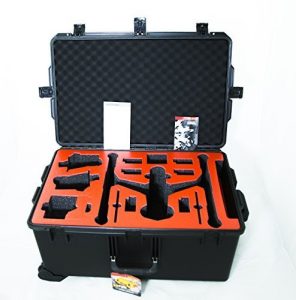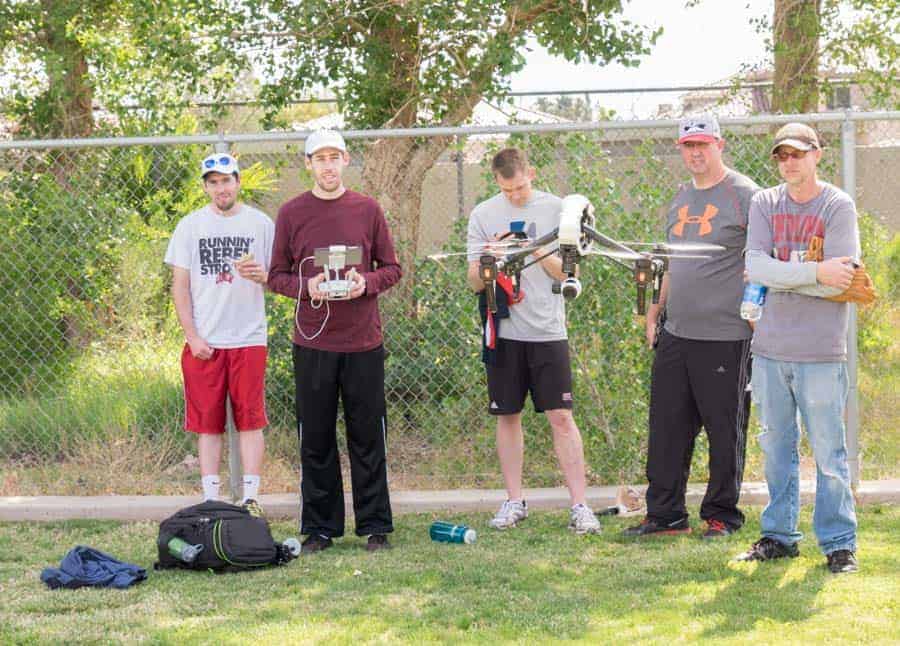I am sure there are many of you out there like me who have heard all the ravings about drones and wanted to try one, but could never find a justification to actually purchase one. Like many hobbyists, I am busiest with my camera when I get to travel. Because my wife and I usually prefer to travel internationally, I just never imagined being able to use a drone in my travel photography. How would I deal with packing the drone when luggage space is already so limited; What about security regulations and foreign laws; What about theft or damage; and on and on. With a lot of valid concerns, I just never thought about using a drone for travel photography.
Then, my friend Sam Tielemans told me he was taking his drone with him to Thailand, Cambodia and China. When I saw the video he posted of his trip, I was hooked. He was able to capture amazing video of great locations with views I could never accomplish.
Sam lives a couple blocks away from me in Las Vegas and is a full-time family counselor and part-time videographer. He bought the DJI Inspire about ten months ago. He chose the more expensive Inspire because the 360 degree gimbal head is great for making video and the legs and propellers lift out of view to ensure a clear view for the video. He opined the DJI Phantom 3 or 4 would be great for photographers who do not rely as heavily on video.
Tip #1: Research the Laws where You are Visiting
Sam's trip included stays in Thailand, Cambodia and China. The most important thing about traveling with a drone is doing your research about where you are visiting. I thought this would be a daunting task (Even being familiar with such research being a lawyer), but you can find pretty much all the information you need on the internet and Sam said he easily found out about the countries he was visiting. With the increasing popularity of drones, the more information is becoming available for regulations you need to follow for any county.
Sam chose not to even fly his drone in Thailand because he learned that it is illegal throughout the country. While this may not always be a deterrent for all people in all countries, Sam learned that the authorities in Thailand actually put people in jail if they catch them flying a drone. Unsurprisingly, he did not want to take that risk.
In Cambodia, it is apparently illegal only to fly in select locations, including the capitol city (rumor has it the queen was spooked when a drone flew by her window) and Angkor Wat (more on that later). Apparently, China has very few restrictions and Sam had no issues flying his drone anywhere there.
DISCLAIMER: This article is not intended to offer legal advice and I have not verified any rules or restrictions on drone usage in any County. Please do your own research before flying a drone.
Tip #2: Find a Good Carrying Case
If you can afford it, Sam recommends buying a hard-shell carrying case, like the one to the right from Pelican, that would make it easier to carry the drone. Sam was creative in his travels without a dedicated carrying case. Because he had to pack light, he had one bag for all his personal items and then carried his drone in a garment bag he could sling over his shoulder and use as a carry on. His biggest concern with this set up was the lack of any protection for the drone. With it close to his body, he was extra careful with it and had no issues. He said a set up like his worked fine and said there are a lot of creative alternatives if you cannot or are not willing to purchase a dedicated hard case.
Tip #3: Give Yourself Extra Time at Smaller Airports
You might think a drone in a garment bag would attract a lot of attention going through airport security, but Sam was able to get through with relative ease. Of his nine total flights, he was only asked to take the drone out of his bag twice. Only once was there any actual concern. While he was lucky, you never know what to expect in smaller airports in some countries, especially when flying budget airlines. I have witnessed more than one frantic person that had an unsuspected issues at a foreign airport. The last thing you want is to deal with such issues if you are already short on time. In some countries, I would recommend always having a back up plan for getting to the airport if the country is known for going on strike.
Tip #4: Know what Kind of Batteries You can Carry
On a small flight from Thailand to Cambodia, the customs agent made Sam declare one of his batteries for the drone. Apparently, his higher-charge battery was not supposed to be carried, but they eventually let him take it without any further problems. Given that the batteries do not give you very much flight time, you will likely want the higher-charge batteries, but be aware that they can come with extra complications if you are not aware.
Tip #5: Embrace the Attention from Locals

With one exception, Sam had no issues flying his drone anywhere. He never feared the locals trying to steal or damage it. On the contrary, the drone proved a remarkable tool for helping him interact with local people. In many of the less-developed areas, nobody had ever seen or heard of a drone and just wanted to see it. Even in more developed areas, Sam had a crowd of people looking over his should at the screen whenever he flew it. Drones are still rare enough that you will attract attention and curiosity from people pretty much wherever you fly it. This was especially true for Sam with children. That makes the drone a great tool for getting to meet locals if that is important to your travel. I remember a trip I made to the rural villages in Romania. As we drove by the horse and buggies, little kids flocked to our car and gladly accepted our candy. That was such a cool experience. I cannot imagine how amazed they would have been had we gotten out of the car and started flying a drone (not to mention the amazing video/images we could have captured).
If you get this opportunity, take advantage of it. For me, experiencing a new culture is the coolest part of traveling and will allow you to get unique images most travelers will never see. Besides the great photo opportunities of children surrounding your drone in awe, take the opportunity to talk with the locals, find out something about them and you will be surprised at opportunities you might get to visit their homes or places they may guide you to for relatively unknown photographic opportunities. The drone can be a great ice breaker to open the door for travelers not willing to approach locals on their own.
Tip #6: Practice Flying Stealthily for Certain Occasions
The one problem Sam encountered flying his drone on this trip happened at Angkor Wat. Drones are highly discouraged at Angkor Wat so it is probably advisable to avoid flying them there, but to anyone that has seen the sprawling temple grounds, I think the temptation would be nearly impossible to avoid.

Tip #7: Bring Extra Propellers
Luckily, Sam did not crash or otherwise damage his drone on his trip through Asia, but it is very important to prepare for the worst in this case where even a small crash could disable your drone for the rest of your vacation. The best thing to bring with you is spare propellers. Unlike extra batteries, these are ch
Having only recently tried flying a drone, I can see how easy it would be to run it into a tree. On my first flight, I spent the first few minutes staring at the drone in the sky and flying it really high to make sure it did not get close to anything. Then, after a few minutes of getting the hang of it, I realized I was spending all my time staring at the screen and had no idea where the drone was actually flying. Because of this, I could have easily flown it into a tree that was not in the frame of the camera. That being said, I was surprised at how easy it was to fly the drone and I never once worried I would crash it from an inability to control where it was going.
Tip #8: Bring Extra Batteries
In addition to packing extra propellers, you will want to pack as many batteries as possible. Unfortunately, the batteries are much larger than we are used to in a camera and much more expensive ($150-$200). Each large and expensive battery only gives you about 18 minutes of fly time so you will need multiple batteries to get a decent amount of footage.
Tip #9: Plan to Accommodate Your Need to Charge the Batteries
Even though each battery only gives you 18 minutes of fly time, they take 80 minutes to charge. Because of this, it is mostly impractical to try charging the batteries during the day at many places you would travel. Sam said he had very little luck being able to charge the batteries around town and, because they drain so fast and take so long to charge, you cannot really charge them while you are shooting at a location. Sam traveled with three batteries and mostly just recharged them at night. This meant he was only able to fly and film for about 45 minutes per day on his vacation. For a travel/landscape photographer that seems crazy as I will shoot longer than that just for the sunrise. The importance of honing your fly skills and thoroughly planning where you want to fly is absolutely necessary.
Tip #10: Pack your Batteries in your Carry-On Luggage
Another thing to keep in mind with lithium batteries is you have to be able to fit them in your carry-on luggage ( this is true for any lithium battery including your camera battery). Because the batteries are so large, this is another factor that greatly limits your ability to take a lot of spare batteries with you. Make sure you have a carrying case and/or carry-on luggage that has extra space for as many batteries as you can afford. Think about this for when you are out walking too as you will want all the batteries on your person rather than sitting back in your luggage.
Tip #11: Pack your Batteries in a Fire-Proof Bag
Because the lithium batteries are subject to spontaneous combustion (which is why you can't check them), Sam said he would have felt much more comfortable had he been able to store the batteries in a fire-proof bag for carrying.
Tip #12: Learn Adobe Premier and Publish your Videos
Sam uses Adobe Premier to edit all of his videos captured on the drone. He says it generally takes up to two hours to edit just 2 minutes of footage. Because you have to get additional licenses to fly the drone for commercial purposes, Sam mainly used his Inspire for recreation and posts his videos on Vimeo.
Additional Questions?
Sam offered his email for anyone looking to reach him for additional questions. Feel free to comment as well and I will ensure the questions reach him.





Wow! I so want one of these and reading about them only makes this urge harder to ignore 🙂
Great article, Brent. Really well done and helpful.
Drones look like a lot of fun to pilot because they can go to a lot of places. I did not know that lithium-ion batteries could catch on fire! If I do end up getting one I’ll be sure to get a fireproof bag like you suggested just so that way it can stay contained.
they dont catch on fire almost at all. Anyway, a fireproof bag (if you can find a good one) is very expensive and useless, especially since even those catch on fire eventually. I have being flying my drone and travelling with my drone for 3 years now and have never had a battery catch on fire.
Thanks for a good article. I just want to know if your drone is pack in check in baggage whenever you travel.
These is a good example of a worth blog reading article. Thank you for sharing such an informative and great blog post like this. It is very rare for me to find droning tips for travelers like me. I do have some questions though, how did you pack your drones? Do you encountered some major problems upon packing your drone? What type of drones can you recommend for a new user and traveler like me? What countries, to be specific that are safe to bring up drones? I really want to know these things. Thank you so much for your time!
Good evening, thanks for sharing a well written and interesting article. I really needed those tips because all the time I’m travelling in order to make good and different photos, and I thought that travelling with drone will be a great challenge to me. To say the truth, I even thought that it’s impossible to take drone to the plane because there are so many laws what kind of things you are actually allowed to take to the airport. However, I won’t want to put drone into check in luggage and I’d prefer to carry it as my carry in cabin luggage. Anyways, thanks for sharing those tips.
And maybe buy yourself a Mavic, rather than the Inspire 🙂 If you play to travel lightly, even small drones like the Phantom series are going to add a lot of luggage to carry around.
The Mavic on the other hand, can fit very nicely in your backpack, without too much additional weight.
Really, there’s nothing better than a Mavic for travelling with your drone and I simply love it for the convenience of carrying it around.
David
I have a trip coming up and debating whether I should bring my Mavic Pro or not. With all the horror stories I hear, I’m a little hesitant. Traveling here in the US will probably be not so bad but you will really need to do your homework before traveling to another country. I think the biggest concern is the battery, as long as you can keep it in a safe bag. Since it will be my first time traveling with my Mavic, I couldn’t have bought a better drone. I can’t imagine lugging around any of the other models, mainly because of their legs and all the other accessories.
I really like your tip about embracing the attention from locals when traveling with a drone. I just got my very first drone and plan on traveling to Thailand next month and hope to find some good photography opportunities there. Perhaps I’ll be able to visit some of the remote villages and see the more traditional and authentic way of living if locals get interested, which would be great to capture on camera!
New idea. I like it. Hope I will try it. Thank you.
Thanks for sharing a these type of information and interesting article. I really needed those tips, and give idea like how much weight a drone can carry
Okay i’ll try these thanks for sharing though, very informative.
Really nice & helpful article! thanks for sharing with us.
Buying drone insurance is great advice and nice to see there are options for buying it.
Amazing guidelines you have here! There are many reasons to get a drone for trip.
I hope that this has provided some ideas for how much weight a drone can carry. thanks for share this information.
Drone technology is changing so fast and there are new drones with new features every year.
Today, drones are being used in agriculture, disaster relief and management, traffic management, etc.
Liked this article on how to fly a quadcopter drone or how to work drone, please share more stuff!
Interesting guidelines you have share here for how the drones work! Today, drones are being used in agriculture, disaster relief and management, traffic management, etc.